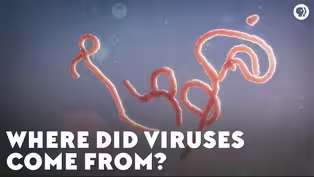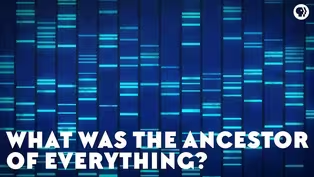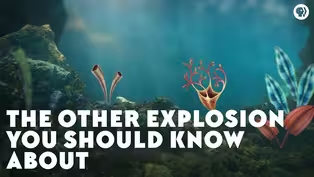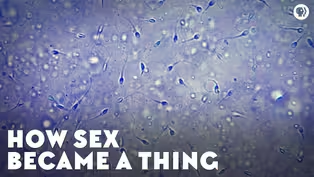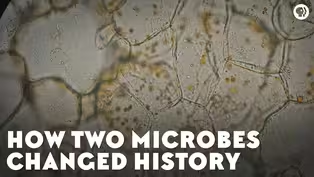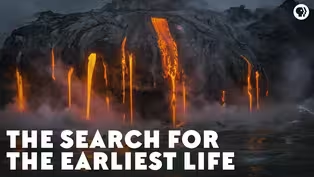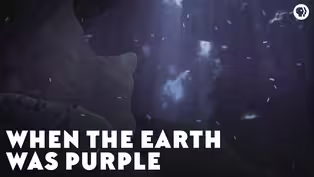
That Time Oxygen Almost Killed Everything
Season 1 Episode 7 | 4m 45sVideo has Closed Captions
What if we told you that there was a time when oxygen almost wiped out all life on Earth?
What if we told you that there was a time when oxygen almost wiped out all life on Earth? 3 billion years ago, when the world was a place you’d never recognize, too much of a good thing almost ruined everything for everybody.
Problems playing video? | Closed Captioning Feedback
Problems playing video? | Closed Captioning Feedback

That Time Oxygen Almost Killed Everything
Season 1 Episode 7 | 4m 45sVideo has Closed Captions
What if we told you that there was a time when oxygen almost wiped out all life on Earth? 3 billion years ago, when the world was a place you’d never recognize, too much of a good thing almost ruined everything for everybody.
Problems playing video? | Closed Captioning Feedback
How to Watch Eons
Eons is available to stream on pbs.org and the free PBS App, available on iPhone, Apple TV, Android TV, Android smartphones, Amazon Fire TV, Amazon Fire Tablet, Roku, Samsung Smart TV, and Vizio.
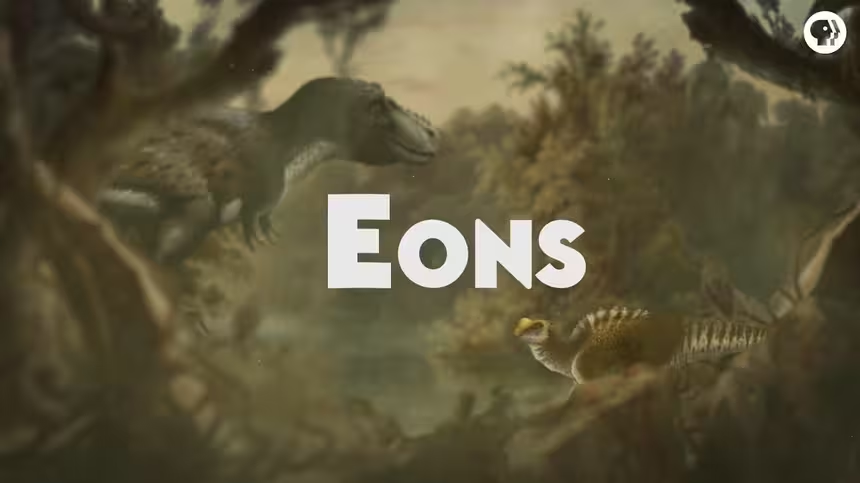
Welcome to Eons!
Join hosts Michelle Barboza-Ramirez, Kallie Moore, and Blake de Pastino as they take you on a journey through the history of life on Earth. From the dawn of life in the Archaean Eon through the Mesozoic Era — the so-called “Age of Dinosaurs” -- right up to the end of the most recent Ice Age.Providing Support for PBS.org
Learn Moreabout PBS online sponsorshipMore from This Collection
Early Life on Earth
Video has Closed Captions
Where did viruses come from and how did they evolve? Are viruses alive? (7m 29s)
What Was the Ancestor of Everything?
Video has Closed Captions
The search for our origins go back to a single common ancestor. (11m 6s)
The Other Explosion You Should Know About
Video has Closed Captions
The Sudden burst of diversity that marked the dawn of truly complex life on our planet. (6m 25s)
Video has Closed Captions
Follow the early history of how (and why) sex became a thing. (5m 39s)
How Two Microbes Changed History
Video has Closed Captions
More than two billion years ago, a tiny living thing started to live inside another thing. (7m 39s)
The Search for the Earliest Life
Video has Closed Captions
Even in a hellish environment, life found a way. (5m 37s)
Video has Closed Captions
But imagine a time when the Earth looked a little … purple. (5m 37s)
Providing Support for PBS.org
Learn Moreabout PBS online sponsorshipAre you like me?
Do you think oxygen is ... pretty great?
Of course you do!
But what if I told you that there was a time when oxygen almost wiped out all life on Earth?
This is a story about how too much of a good thing can ruin everything for everybody.
Let's start 3 billion years ago, in the Archaean Eon, when the world was a place you'd never recognize.
Or ... even be able to survive in.
Back then, only 2 or 3% of the planet's surface was dry land.
The rest was covered in oceans, and ... they were chock full of iron.
Because of all that iron, the oceans were probably not blue, but green -- and not because of algae or other life, but because of rust.
You might think of rust as being brown, but green rust is a thing too!
It forms where there's a lack of oxygen, and back in the Archaean, oxygen was in short supply everywhere.
So in the oceans, iron reacted with hydroxides and elements like sulfur and chlorine, covering much of the world in green rust.
Above the green oceans, the atmosphere was mostly nitrogen -- as it is today -- along with water vapor, carbon dioxide, and methane.
But, again, very little oxygen.
Which was fine at the time, because microscopic life on Earth back then was probably anaerobic.
Then about 2.3 billion years ago, some new kids showed up: Photosynthesizers.
But not the kind that we're used to These were bacteria, like the familiar blue-green cyanobacteria, or maybe even a kind of purple microbe known as halobacteria.
Either way, they used the Sun's energy to convert CO2 and water into food -- releasing oxygen as waste.
Which was ... ok ... for a while.
But not for long.
Because when these little microbes started farting out oxygen, it changed the chemical balance of the entire biosphere and, eventually, altered the face of our planet.
First, within about 200 million years, the oxygen from these new bacteria began reacting with the iron in the oceans.
This turned the oceans from a mellow green to a deep blood-red, as the seas began to fill with iron oxide -- what we know as rust.
In fact, you can still see exactly when and where this happened, in strata known as Banded Iron Formations, where huge swaths of rust settled out of oceans to form layers of red-brown rock.
But beyond making water rusty, rising oxygen levels also shifted the balance of power among living things.
Anaerobic microbes started to die off, as they were basically poisoned by the oxygen.
Meanwhile, the newer, more efficient, photosynthetic life began to spread.
And things changed even more when the oxygen in the ocean left the water ... and entered the air.
For the first time in Earth's history, large amounts of free oxygen started building up in the atmosphere.
And this is what scientists call a game-changer.
Because then, the climate started to change too.
Drastically.
As the photosynthetic bacteria kept spreading, they used up more and more of the carbon dioxide in the atmosphere.
And CO2 is a greenhouse gas, so as its levels went down, so did the temperature.
On top of that, oxygen also started reacting with the methane in the atmosphere, taking it out of circulation.
With greenhouse gases at an all-time low, our planet started to see the first major ice ages in its history.
Temperatures dropped so drastically that it triggered a global glaciation, and our once balmy waterworld became shrouded in ice.
There may have been several pulses of these icy events, but by far the biggest of them came to be known as the Huronian glaciation - - and it lasted for 300 million years.
Between these huge changes in the climate, and the radically different chemistry of the planet, most life on Earth was pushed to the brink of extinction.
And this included the new guys -- the photosynthetic bacteria that were pumping out all the oxygen in the first place!
Because, remember, they needed CO2 to survive.
So they were basically being suffocated by their own waste, which ... when I say that out loud, that's just gotta be a terrible way to go.
We don't know the full extent of the damage.
But the effects of this whole episode -- sometimes called the Oxygen Catastrophe -- is considered one of the biggest extinction events in history.
But, you know how this movie ends, right?
By the time the Huronian glacial period ended, about 2.1 billion years ago, some life remained.
And the life-forms that survived inherited a better, more hospitable planet.
Oxygen was now abundant in the air and water, and a new thing also appeared in the atmosphere: an ozone layer.
This coating of molecular oxygen helped block dangerous ultraviolet radiation from the sun, and suddenly new things became possible.
From there, well, you know what happens.
Life became more complex and awesome and wonderful, and here we are.
It seems strange that bacteria could end up covering the whole world in ice.
And who'da thought oxygen would be responsible for wiping out ... almost everybody?
But it just goes to show you that, sometimes, things gotta get worse before they get better.


- Science and Nature

A documentary series capturing the resilient work of female land stewards across the United States.












Support for PBS provided by:

